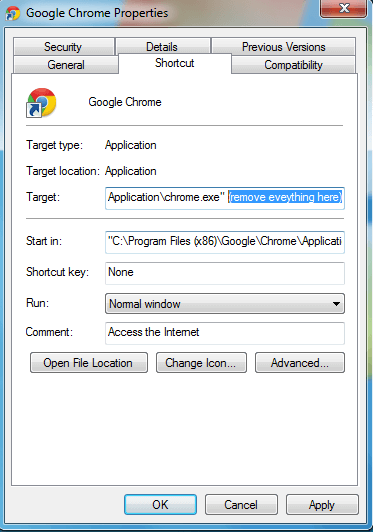Custom Search Bar
Custom Search Bar is an unwanted software component that introduces changes to the main browser with the aim to aggressively popularize low-ranking sites. Custom Search Bar is often distributed and installed with the help of rogue sites and file-bundles and could potentially lead to security issues.

Custom Search Bar is a piece of software that can be referred to as a PUP (potentially unwanted program) or a browser hijacker. The main functions of apps and programs of these categories are to draw in more views to certain websites and serve as online advertising tools by spamming the users’ browsers with endless streams of advertising materials in the forms of pop-ups, banners, page-redirects, pop-unders, and more. The effects of an unwanted app like Custom Search Bar could be experienced in any browser, including Chrome, Firefox, Opera, Edge, etc.
Additional symptoms associated with such apps are default search engine and homepage replacement as well as other potential unauthorized changes that could get introduced to the affected browser without the user’s informed approval. Even though none of the aforementioned effects that Custom Search Bar may have on the browser and computer are directly harmful or threatening, they could potentially expose the user’s system and virtual privacy to a number of risks, albeit in an indirect way.
Why Custom Search Bar should be removed
There are quite a few reasons why it’s best to ensure that any hijacker current present in your system gets deleted ASAP. First and most obvious is the fact that a software like this one could greatly decrease the quality of your browsing experience by frequently interrupting you with its ceaseless flow of advertisements, and by making changes to your browser that make using the latter less efficient.
However, an even bigger reason to uninstall software like Custom Search Bar is that the ads and page-redirects it spams you with as well as the undesirable changes introduced to your browser could potentially make your computer more vulnerable to various types of malware, including Trojan Horses, Spyware, and Ransomware. Additionally, some of the ads and redirects could lead you to scam pages with phishing forms where, if you are not careful, you may end up sharing sensitive personal data, such as credit or debit card numbers, with online scammers. For these reasons, and other similar reasons, we strongly recommend that you do everything you can to delete Custom Search Bar and anything related to it from your computer.
In the end, even if the presence of this browser hijacker doesn’t cause any serious negative impact to your computer, it’s still a piece of software that likely has no practical use for you, and so there’s no reason for it to remain on your computer.
Protecting your browser in the future
The main thing you need to remember in order to keep your browser safe and clean in the future is that most browser hijackers rely on the users’ lack of attention to small details such as the custom settings menu in an installation wizard or the random pop-ups that various sites put on your screen when you try to visit them. For instance, a lot of hijackers like Custom Search Bar and Active Search Bar are added to the installers of other, more desirable, programs as bonus components that most users do not notice and thus do not leave out of the installation. Similar is the case with site pop-ups that may initially seem like captchas, but are actually permission buttons that, once selected, would allow the hijacker to gain control of your browser. It is, therefore, important to always pay attention to anything that seems out of the ordinary so that you don’t have to deal with it at a later time. Also, obviously, keeping away from questionable websites and content, and not downloading suspicious software is extremely important if you want to keep your computer and data safe and secure and if you want to prevent violations of your virtual privacy as much as you can.
SUMMARY:
| Name | Custom Search Bar |
| Type | Adware/Browser Hijacker |
| Detection Tool |
Remove Custom Search Bar Virus
Begin by using thеse time-saving instructions to get rid of Custom Search Bar without going through the entire guide:
• When the hijacked browser opens, click the main menu button (typically found top right).
• Next, find and select More Tools/Add-ons.
• Select the Extensions tab or sub-menu.
• Open the Extensions page. Examine each new extension carefully. If you find any extensions that are suspicious, are creating disruption, redirects or ad-interruptions, simply click the “delete” or “trash” button to remove them from the browser.
• Restart the browser to see if the removal of the potentially unwanted extensions took effect.
If the Custom Search Bar issue has been resolved, skip the steps below. If the hijacker is still affecting you with annoying advertising, redirection, and browser modifications, please follow the guide’s steps and report any difficulties in the comments.

During the next steps, you will need to restart your computer and browser. So, to complete this guide successfully, we recommend bookmarking it before moving on. This way, you can immediately return to it whenever you need it. The guide can also be opened on another device if that is more convenient for you.
Next, we recommend restarting your computer in Safe Mode using the steps found on this link. In Safe Mode, only essential processes and programs run, making it easier to detect and remove browser hijackers.

WARNING! READ CAREFULLY BEFORE PROCEEDING!
Press CTRL, SHIFT, and ESC simultaneously. The screen should now show the Windows Task Manager.
Look at the Processes tab (the “Details” tab on Windows 8 and 10) for processes with strange names, high CPU or RAM usage, or related to ad-generation or page redirection. You may also seek for Custom Search Bar -related processes that are named after the hijacker.
Right-click on each suspicious process and choose Open File Location. You should now be able to see the associated files.

Use an internet virus scanner to scan these files for dangers. This free and powerful scanner can save you time and effort:

If the files contain malware, right-click the process in the Processes tab and select End Process. This will stop the process and allow you to remove the harmful files or folders.

Open a Run window with Windows and R. Then type appwiz.cpl in the Run box and hit OK.

A new Control Panel window should appear on the screen, listing all the applications on your computer. Look through the list to see if there are any new programs associated with the installation of the hijacker. If you detect one, remove it immediately, along with any hijacker-related components.
Exit the programs list and go to Windows search in the Start menu (in Windows 10 it is the magnifying glass icon bottom left next to the Windows Start menu).
Then enter msconfig in the search field. Uncheck any entries associated to Custom Search Bar in System Configurations’ Startup tab. This will block the hijacker from starting up when the system starts.


To open a new Run window, hold down the Windows and R keys. Then copy and paste the line below:
notepad %windir%/system32/Drivers/etc/hosts
Then click OK. This should open a Hosts file in Notepad. Look for the word “localhost” in the text and look at the bottom for any suspicious IPs.
Don’t delete IPs that look questionable without being absolutely sure that they represent a danger. Instead, copy the suspicious addresses and post them in the comments. We can assist you decide future steps if we confirm that they are dangerous.

Next, check your Network Connection settings. Search for Network Connections in the Windows search field (On Windows 10 you just write it in the search bar).
- Right-click the Network Adapter you’re presently using and select Properties from the menu.
- In the Properties box, find Internet Protocol Version 4 (ICP/IP), highlight it, and click the Properties button.
- Select Obtain DNS server address automatically, then click Advanced.
- In the new window, select the DNS tab and delete any rogue DNS.
- When you’re done, click OK to apply your changes.


Type Regedit in the Windows search bar to launch the Registry Editor. Next, press the CTRL and F keys from the keyboard together. Then type the hijacker’s name in the Find box. Clicking Find Next will start the search for Custom Search Bar -related entries in the registry. If anything is found, right-click to eliminate it. You may need to repeat the search until no more entries are discovered.
Next, manually search the locations listed below for questionable entries by navigating to them from the Registry Editor’s left panel:
- HKEY_CURRENT_USER—-Software—–Random Directory.
- HKEY_CURRENT_USER—-Software—Microsoft—-Windows—CurrentVersion—Run– Random
- HKEY_CURRENT_USER—-Software—Microsoft—Internet Explorer—-Main—- Random
Incorrect Registry changes or deletions might cause issues with your computer and programs. You can damage them by deleting important registry files that are required for their operation. To avoid damaging your computer, we recommend that you use a professional removal tool.

This step explains how to delete Custom Search Bar and its components from your browsers. If you use several browsers, do the instructions below in all of them to prevent the browser hijacker from disturbing you the next time you restart the system.
Right-click on your browser’s shortcut icon. Then choose Properties.

When the Properties window opens, click on Shortcut in the upper right corner. After that, go to where it is written Target and check if anything has been added after .exe in the text field. In case that you find something, remove it as shown on the image below:

![]() Remove Custom Search Bar from Internet Explorer:
Remove Custom Search Bar from Internet Explorer:
When Internet Explorer opens, click the gear icon in the top right. Then click Manage Add-ons and disable any Custom Search Bar related add-ons or extensions in the Add-ons list.

Next, click the gear icon again and choose —–> Internet Options. If your homepage URL has been modified without your consent, erase it and replace it. Click on Apply before closing.
![]() Remove Custom Search Bar from Firefox:
Remove Custom Search Bar from Firefox:
In the browser, go to the main menu icon and select Add-ons, then Extensions.
Look for Custom Search Bar and delete any unwanted extensions from the Extensions page.

![]() Remove Custom Search Bar from Chrome:
Remove Custom Search Bar from Chrome:
Close Chrome and navigate to this address on your computer:
C:/Users/!!!!USER NAME!!!!/AppData/Local/Google/Chrome/User Data.
Find the Default folder and rename it Backup Default. Then restart Chrome.

If this removal guide can’t help you get rid of Custom Search Bar , you may conduct a thorough system scan using the anti-virus software on this page, or you can use our free online virus scanner to completely eliminate Custom Search Bar and all files associated to it. You may also leave any questions or comments in the comments section below and we will do our best to reply to you shortly.

Leave a Comment